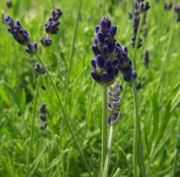Difference between revisions of "Spike oil"
(username removed) |
m (Text replace - "== Authority ==" to "== Sources Checked for Data in Record ==") |
||
| Line 22: | Line 22: | ||
° J.S. Mills, R.White, ''The Organic Chemistry of Museum Objects'', Butterworth Heinemann, London, 1994. ° R. Mayer, ''A Dictionary of Art Terms and Techniques'', Harper and Row, New York, 1969. | ° J.S. Mills, R.White, ''The Organic Chemistry of Museum Objects'', Butterworth Heinemann, London, 1994. ° R. Mayer, ''A Dictionary of Art Terms and Techniques'', Harper and Row, New York, 1969. | ||
| − | == | + | == Sources Checked for Data in Record == |
* R. J. Gettens, G.L. Stout, ''Painting Materials, A Short Encyclopaedia'', Dover Publications, New York, 1966 | * R. J. Gettens, G.L. Stout, ''Painting Materials, A Short Encyclopaedia'', Dover Publications, New York, 1966 | ||
Revision as of 17:46, 1 May 2016
Description
Oil extracted from the leaves of lavender plants (Lavandula latifolia or Lavandula spica) from the mint family. Spike lavender oil is a nondrying oil that was first used as a retardant and thinner in oil paints in the 16th century (Mayer 1969). Although similar to turpentine, spike oil evaporates slower and can become gummy. It is a powerful solvent that can make oil paints and varnishes sticky.
Synonyms and Related Terms
Lavandula latifolia; Lavandula spica; spike lavender oil; esencia de espliego (Esp.); olio di lavanda (It); oil of spike
Other Properties
Yellowsih to greensih color with stron odor.
| Boiling Point | 170-200 |
|---|
Additional Information
° J.S. Mills, R.White, The Organic Chemistry of Museum Objects, Butterworth Heinemann, London, 1994. ° R. Mayer, A Dictionary of Art Terms and Techniques, Harper and Row, New York, 1969.
Sources Checked for Data in Record
- R. J. Gettens, G.L. Stout, Painting Materials, A Short Encyclopaedia, Dover Publications, New York, 1966
- Ralph Mayer, A Dictionary of Art Terms and Techniques, Harper and Row Publishers, New York, 1969 (also 1945 printing)
- John S. Mills, Raymond White, The Organic Chemistry of Museum Objects, Butterworth Heineman, London, 2nd ed., 1994
- M. Doerner, The Materials of the Artist, Harcourt, Brace & Co., 1934
- G.S.Brady, Materials Handbook, McGraw-Hill Book Co., New York, 1971 Comment: p. 589
- Random House, Webster's Encyclopedic Unabridged Dictionary of the English Language, Grammercy Book, New York, 1997
- The American Heritage Dictionary or Encarta, via Microsoft Bookshelf 98, Microsoft Corp., 1998
- Art and Architecture Thesaurus Online, http://www.getty.edu/research/tools/vocabulary/aat/, J. Paul Getty Trust, Los Angeles, 2000
